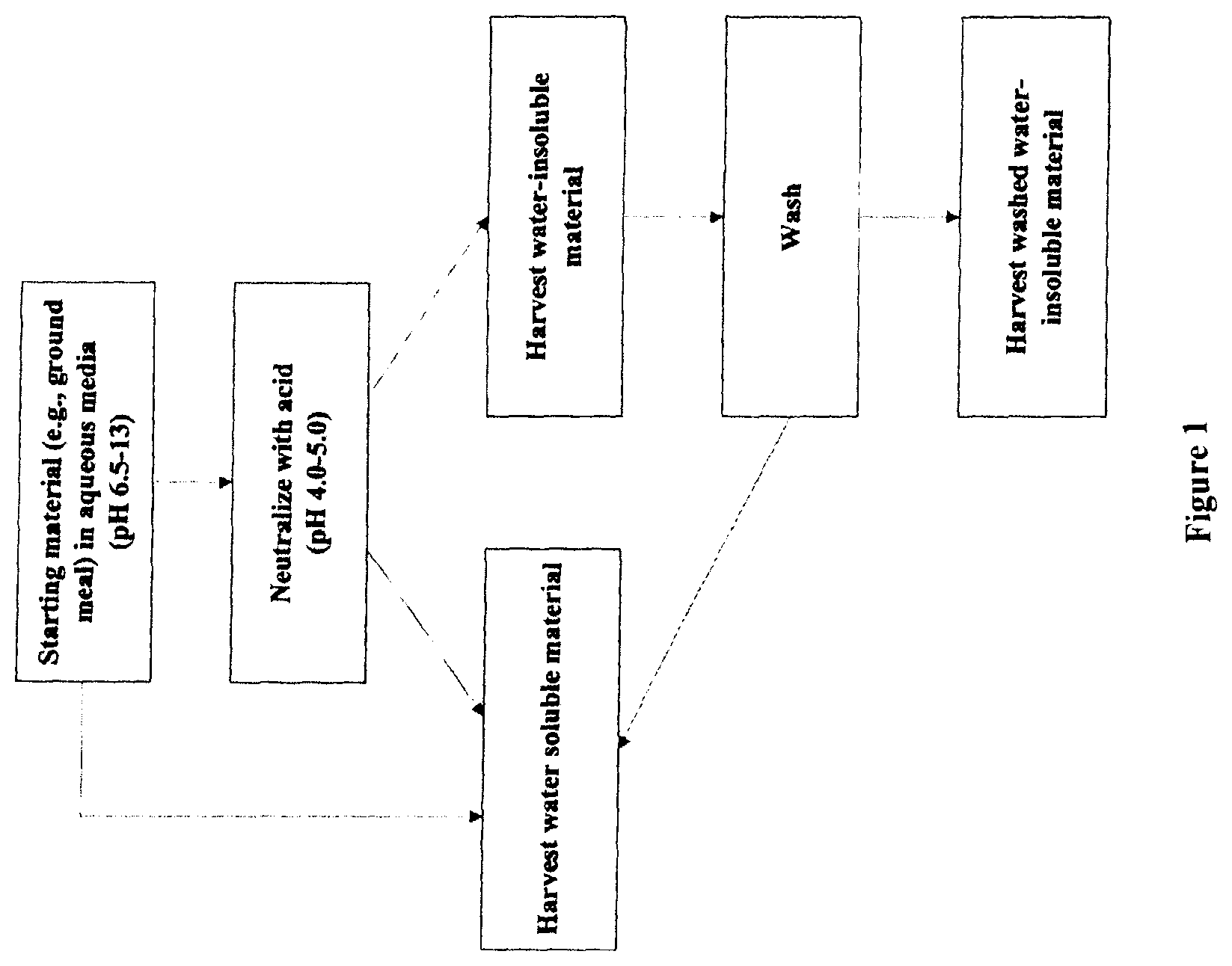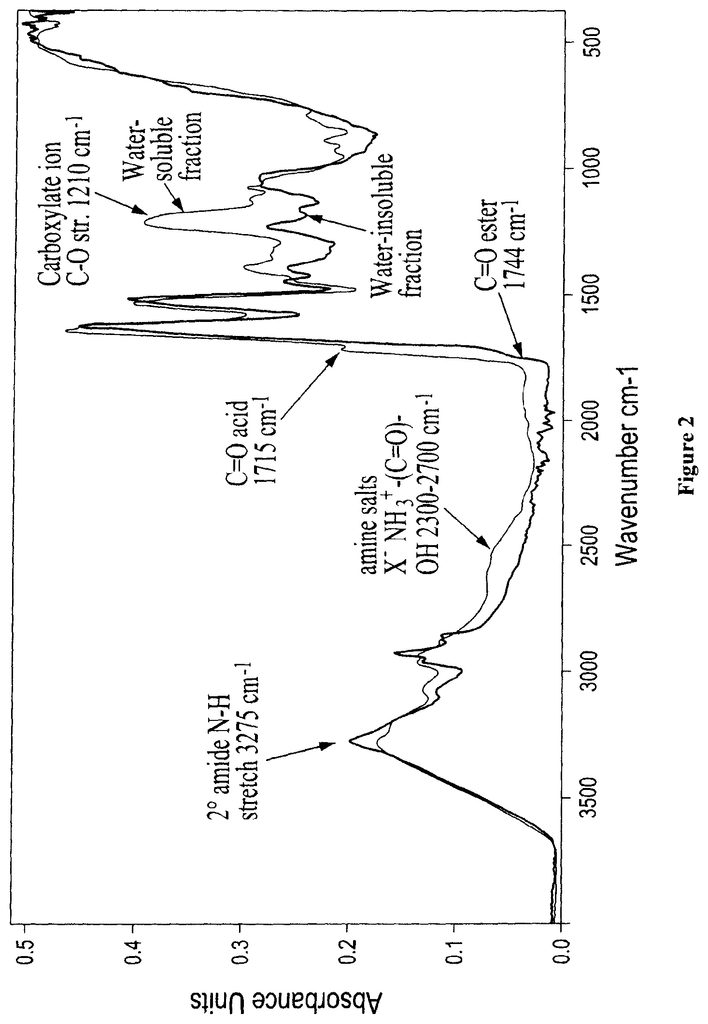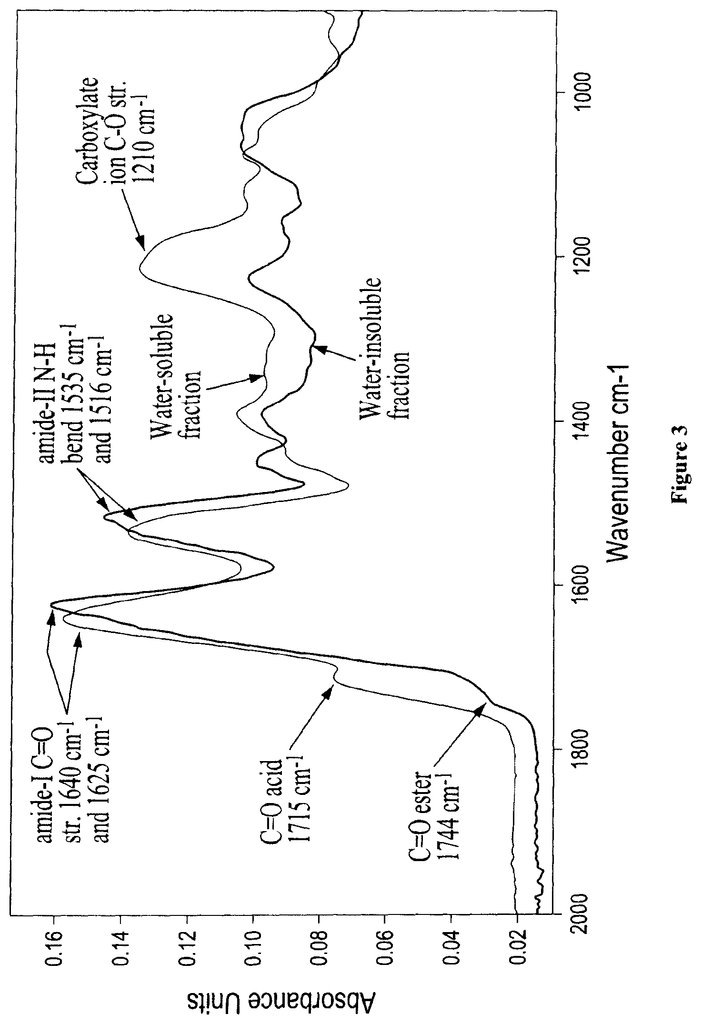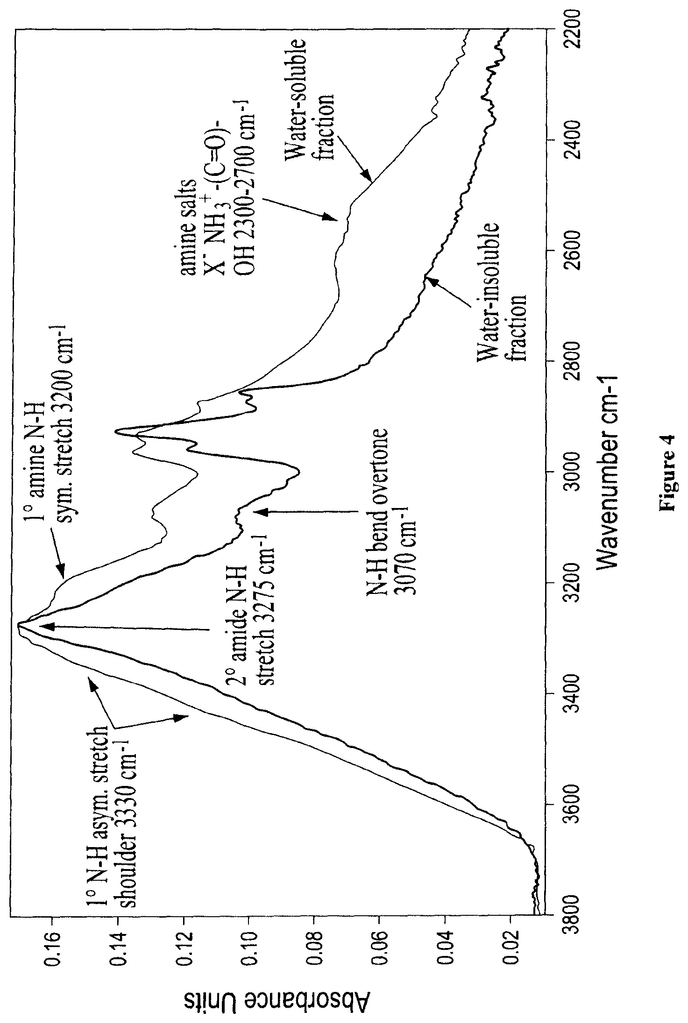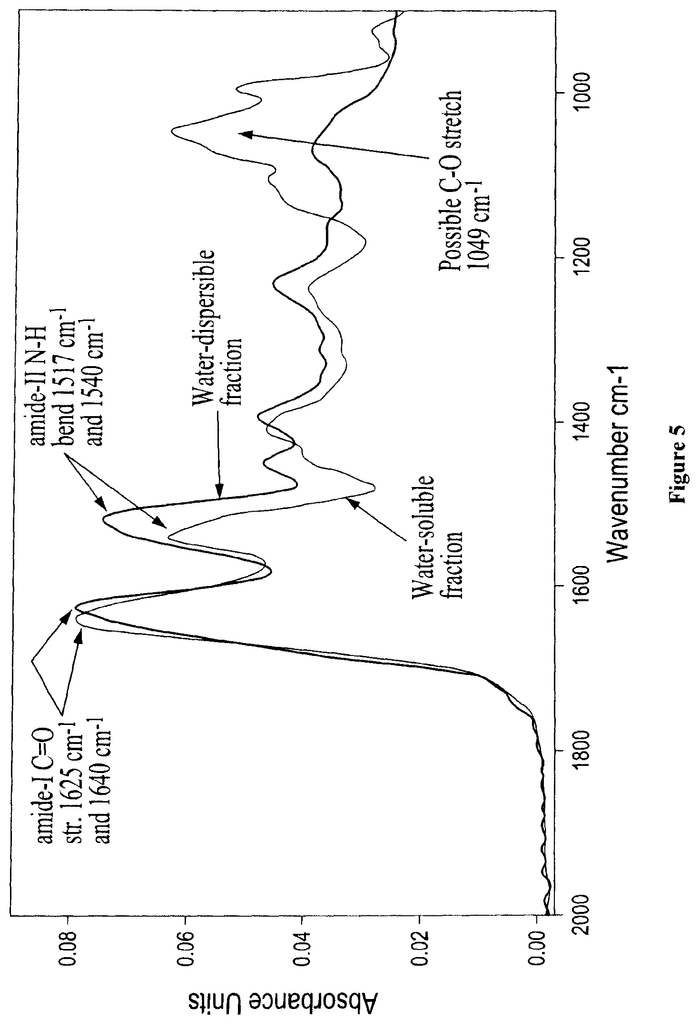Invented by Anthony A. Parker, Joseph J. Marcinko, Evertree SAS
Manufacture of Protein-containing Adhesives
Protein-containing adhesives are typically made from animal or plant proteins. Animal proteins such as casein, gelatin, and collagen are commonly used in the manufacture of these adhesives. Plant proteins such as soy protein and wheat gluten are also used in some formulations.
The manufacturing process for protein-containing adhesives involves several steps. First, the protein is extracted from the source material and purified. The purified protein is then mixed with other ingredients such as water, solvents, and cross-linking agents to form the adhesive. The adhesive is then tested for its strength and other properties before being packaged and shipped to customers.
Use of Protein-containing Adhesives
Protein-containing adhesives are used in a variety of applications. In the woodworking industry, these adhesives are used to bond wood veneers, laminates, and other wood products. They are also used in the paper and packaging industry to bond paper products such as cardboard boxes and paper bags. In the textile industry, protein-containing adhesives are used to bond fabrics and other materials.
One of the main benefits of using protein-containing adhesives is their strength. These adhesives have excellent bonding properties and can withstand high levels of stress and strain. They are also resistant to water and other environmental factors, making them ideal for use in outdoor applications.
Another benefit of protein-containing adhesives is their sustainability. Many of these adhesives are made from renewable resources such as plant proteins, which makes them more environmentally friendly than other types of adhesives.
Market for Protein-containing Adhesives
The market for protein-containing adhesives has been growing steadily over the years. According to a report by MarketsandMarkets, the global market for protein adhesives was valued at $1.6 billion in 2019 and is expected to reach $2.2 billion by 2024.
One of the main drivers of this growth is the increasing demand for eco-friendly and sustainable adhesives. Many industries are looking for ways to reduce their environmental impact, and protein-containing adhesives offer a viable solution.
Another factor driving the growth of this market is the increasing demand for high-performance adhesives. Protein-containing adhesives offer excellent bonding properties and can withstand high levels of stress and strain, making them ideal for use in demanding applications.
In conclusion, the market for protein-containing adhesives is growing steadily, driven by the increasing demand for eco-friendly and sustainable adhesives, as well as the need for high-performance adhesives. The manufacture of these adhesives involves several steps, including the extraction and purification of proteins, and the mixing of these proteins with other ingredients to form the adhesive. Protein-containing adhesives are used in a variety of industries, including woodworking, paper and packaging, and textiles, and offer excellent bonding properties and sustainability.
The Evertree SAS invention works as follows
The invention consists of protein adhesives, and methods for making and using them. One type of adhesive contains lignin, ground plant meal, or a polypeptide isolated from plant biomass. Other types of protein adhesives described herein contain a plant protein composition and either a hydroxyaromatic/aldehyde, urea/aldehyde, or amine/aldehyde component.
Background for Protein-containing Adhesives, and their manufacture and Use
Adhesive composites are widely used in the wood product industry to produce composites like chipboard, fibreboard, and other composite wood products. Engineered lumber composites also use adhesive compositions. Recent environmental concerns highlight the need for environmentally-friendly adhesive compositions. However, the adhesive compositions commonly used in wood products are not environmentally-friendly. “There is a need for adhesive compositions which reduce the use of toxic chemicals and petroleum, as well as minimize the use of toxic feedstock.
In response to the demand for environmentally-friendly adhesive compositions, certain soy products have been used to create adhesive compositions. There are many challenges to developing an adhesive from soy products. The adhesive composition, when it is cured into a binder, must have a sufficient bond strength. For certain applications, the adhesive composition should be sufficiently moisture resistant when it is cured into a binder. The adhesive composition also needs to have a long enough pot life that it doesn’t cure before being used on the components of the wood product. The soy product must also be able to be produced in large quantities at an affordable price, and it should be able to withstand the curing conditions required to create the wood product.
Various reports discuss efforts to develop an adhesive composition using certain soybean products. U.S. Patent Application 2008/0021187 describes a composition of adhesives containing soy flour denatured by urea. U.S. Pat. No. 7,416,598 is a description of an adhesive composition that contains a protein component and a moderating ingredient. Zhong and his co-workers describe a composition of adhesive containing a modified soy protein. Zhong et al. J. Appl. Polym. Sci. (2007) 103: 2261-2270. “Yet, despite all these efforts, there is a need for an environmentally-friendly adhesive composition that can be widely used in the wood products industries.
The present invention not only addresses this need but also provides other benefits.
The invention consists of protein adhesive compositions and methods for making and using them, as well as articles made with these adhesives. The protein adhesive compositions are composed of a plant protein, such as a ground plant meal or derived polypeptide compositions from plant biomass. These compositions may also include lignin and hydroxyaromatic compounds, an aldehyde-source, an amine and aldehyde compound, or a combination of the two. The plant protein composition has the advantage of being prepared from biomass, which is a renewable source and is usually a waste product in agriculture. These adhesive compositions can be used to prepare wood composites such as particle boards.
Accordingly one type of adhesive protein composition provided by the present invention contains lignin, and a composition of plant proteins. Lignin can be extracted from wood. Unexpectedly, it was discovered that lignin combined with the plant protein compositions described in this invention can provide an adhesive which can be applied to wooden particles to create a composite particle board. The experiments using lignin only failed to provide a formulation that had sufficient cohesive strength for a composite particle board. In one aspect, the invention provides an adhesion composition containing lignin in combination with a plant-protein composition.
Another protein adhesive composition provided in the invention is composed of a hydroxyaromatic (e.g. phenol), aldehyde, and a selected plant protein composition from the group consisting primarily of isolated polypeptides and ground plant meal. It is intended that the plant protein composition will provide benefits in terms of performance to the adhesive composition. Aldehyde sources can be aldehydes or compositions that release aldehydes (e.g. formaldehyde), in situ. Accordingly, another aspect of the invention provides a hydroxyaromatic-aldehyde adhesive composition comprising a hydroxyaromatic compound, an aldehyde source, and a plant protein composition selected from the group consisting of ground plant meal and isolated polypeptide composition. A more specific embodiment of such protein adhesives relates to a phenol-formaldehyde-plant protein adhesive composition that comprises: (a) phenol; (b) formaldehyde; (c) a plant protein composition selected from the group consisting of ground plant meal and isolated polypeptide composition; and (d) a reactive prepolymer; wherein the ratio of (i) weight percent of reactive prepolymer in the adhesive composition to (ii) the sum of the weight percent of phenol and formaldehyde in the adhesive composition is greater than 1:1. A second more specific embodiment of such protein adhesives relates to a phenol-formaldehyde-plant protein adhesive composition that comprises: (a) phenol and formaldehyde that together constitute from about 0.5% w/w to about 10% w/w of the adhesive composition; (b) ground plant meal in an amount ranging from about 10% w/w to about 30% w/w of the adhesive composition; (c) polymeric diphenylmethane diisocyanate in an amount ranging from about 10% w/w to about 30% w/w of the adhesive composition; and (d) water in an amount ranging from about 45% w/w to about 75% w/w of the adhesive composition.
Yet another protein adhesive composition is provided by the invention. It contains an aldehyde compound, a urea component, and a composition of plant proteins selected from the group of isolated polypeptides and ground plant meal. It is intended that the plant protein composition will provide benefits in terms of performance to the adhesive composition. Aldehyde sources can be aldehydes or compositions that release aldehydes (e.g. formaldehyde), in situ. A urea-aldehyde adhesion composition is also provided by the invention. It comprises a urea, an aldehyde, and a protein composition chosen from the group of plant meal, isolated polypeptide, and ground plant meal.
The invention provides yet another type of adhesive composition containing an amine compound and an aldehyde. A plant protein composition is selected from the group of isolated polypeptides and ground plant meal. It is envisaged that the plant protein composition will provide benefits in terms of performance to the adhesive composition. Aldehyde sources can be aldehydes or compositions that release aldehydes (e.g. formaldehyde), in situ. Another aspect of the invention is an amine-aldehyde adhesion composition that comprises an amine selected from a group consisting a first amine and second amine compounds, an aldehyde, and a composition of plant proteins selected from a group consisting a ground plant meal or isolated polypeptide composition.
In another aspect, the invention consists of a solid binder composed by curing a composition adhesive described herein.
The invention also provides a method for bonding a single article to another article. The method includes the steps (a) of depositing any of the adhesive compositions above on a first article’s surface to create a bonding area, and (b), of contacting the binding surfaces with the surfaces of the second articles to bond the two articles together. Optionally, the method also includes the step of allowing the adhesive composition, after step (b), to cure. This can be made easier by applying pressure, heat, or both.
The invention also provides a method for producing composite materials. The method consists of two steps: (a), combining a composite material with a first and second article using any of the adhesive compositions listed above; (b), curing the mixture created by step (a). The curing may involve applying heat, pressure or both to the mixture.
In certain embodiments, either the first or second article, or both, are made of lignocellulosic or composite materials that contain lignocellulosic. The first article, second article, or both first and second articles may be made of a metal or resin, ceramic, polymer, glass, or any combination thereof. The composite can be used for the first, second, or both articles. The invention also provides a product that is produced using each of the above methods of manufacturing.
Also, the invention provides a product that consists of two or more components that are bonded using one or several adhesive compositions as described in this document. The bonded components may be chosen from the group consisting paper, wood (for example), glass, metal (for instance), fiberglass, wood fibre, ceramic, ceramic dust, and plastics. In other embodiments, paper, wood (or wood fiber), metal, ceramic, ceramic dust, sand or thermoset plastic can be used as bonded components. The invention provides a product (such as a composite material or laminate or a laminate that contains composite material) made using one or several of the adhesive compositions described in this document.
The composite material is a composite of chipboard, particleboard, fiberboard or plywood. It can also be laminated veneer lumber (glulam), laminated whole lumber (laminated composite lumber), composite wooden I beams, medium density fibreboard, high-density fiberboard, oriented strand board and fiberglass. The composite material can be thermoplastic or thermosetting.
In certain embodiments the article is composite. It can be a homogeneous random composite or an oriented composite. In other embodiments the article includes a lignocellulosic material. The article can also be made of paper, wood or glass. It may also contain wood fibers, ceramics, ceramic powder or fiberglass.
In certain embodiments, this article is made of particle board composite. The particle board composite’s performance can be optimized by adjusting the amount of wood used and the adhesive composition. The composite can be made up of at least 80% wood (w/w), at least 90% wood (w/w), at least 95% wood (w/w), or at least 98% wood (w/w).
The article may have any of the following characteristics, depending on the adhesive used: it is moisture-resistant; it remains intact after boiling water for five minutes; two or three components of the material remain bonded; when the material (for example a composite, laminate or a laminate that contains a composite) contains a material lignocellulosic, the material exhibits a cohesive failure no less then 50% and optionally no lower than 75% when the material is subjected to a stress load sufficient to cause the In certain embodiments the article shows no less than 50% of cohesive failure when placed under a load stress that is sufficient to break it.
The invention consists of protein adhesive compositions, and methods for making and using them. The invention also provides articles such as wood composites made with the protein adhesive compositions. The compositions of protein adhesives described herein include a composition of plant proteins. The plant protein composition can be obtained from renewable feedstocks and offers multiple advantages for the preparation of adhesive formulations. The protein component can be a ground plant meal, or a polypeptide isolated from plant meal. “The adhesive compositions may also include, for example, an amine, a urea, and an Aldehyde Source, or a lignin compound, hydroxyaromatic compounds, and an Aldehyde Source.
The invention provides a type of composition containing lignin, and a composition containing plant proteins. A second type of protein-adhesive composition is provided by the invention. It contains an aldehyde, a hydroxyaromatic, and a selected plant protein composition from the group consisting ground plant meal or isolated polypeptide composition. Another type of protein-adhesive composition is provided by the invention. It contains an aldehyde compound, a urea component, and a selected plant protein composition from the group of ground plant meal or isolated polypeptide composition. Another type of protein-adhesive composition is provided by the invention. It contains an amine, an aldehyde, and a selected plant protein composition from the group of ground plant meal or isolated polypeptide composition. The sections below describe the features of these compositions.
The adhesives described in this document can be used to produce a variety wood-based materials including laminates and laminates containing composite materials. The adhesives are used, for instance, in the manufacture of wood composites such as chipboards (also called OSB), fibreboards and other composite wood products. They can also be used to produce engineered lumber composites like I-joists, laminated veneer lumbers (LVL) and structural lumber composites.
Click here to view the patent on Google Patents.
